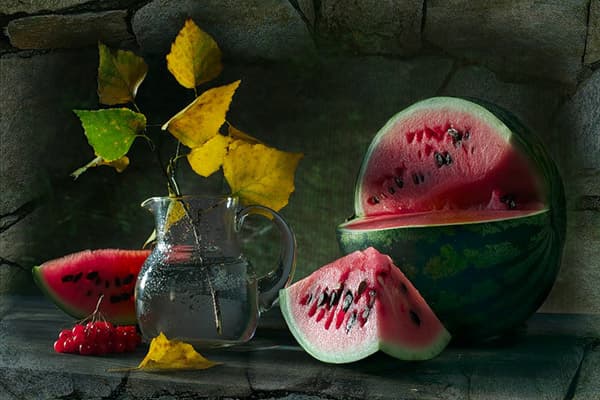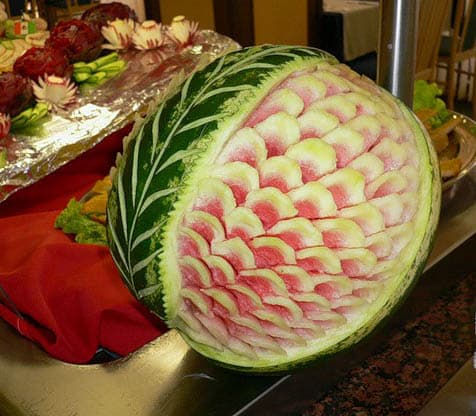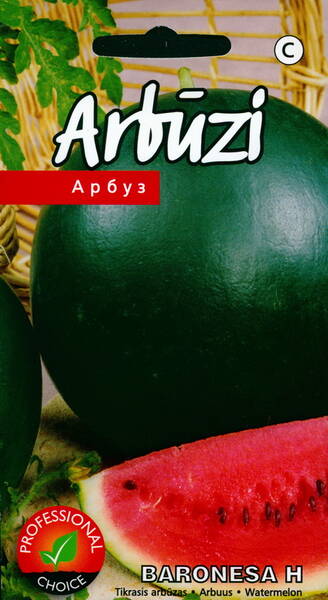Very sweet.
Large-fruited hybrid variety of watermelon (5-8 kg) with black seeds and very uniform fruits. The skin color is dark green. The color of the tender pulp is dark red, the sugar content is high. The plant is strong, small-leaved and densely leafy, which greatly reduces the likelihood of sunburn. This variety has a very high fruit set. Ripens 70-75 days after planting seedlings in open ground.
Recommended for the spring-summer cycle in the open field.


Melons growing in the northern regions has its own characteristics (here are some rules):
Correct selection of varieties.
Melon and watermelon are heat-loving crops. Varieties that can grow in harsh conditions without any shelter have not yet been invented, and if they exist somewhere, they have not yet become widespread. Therefore, try to choose early-ripening varieties that are relatively resistant to low temperatures.
Preparation of seeds.
Well-known methods of pre-sowing preparation, such as warming up, germination, enrichment with nutrients, hardening and bubbling, are very effective and contribute to the rapid germination of watermelon and melon seeds, increased plant resistance to adverse factors, and increased yield.
Seedling method of growing.
Thanks to it, watermelons and melons ripen 10-20 days earlier than when sowing seeds directly in a greenhouse. The seedlings are grown in the same way as cucumber seedlings, in pots or peat-humus cubes for a month. Hardening is carried out a week before planting.
Planting on warm beds.
Beds filled with fresh organic matter provide additional heat to the root system of these plants, which is even more sensitive to low temperatures than the above-ground part.
Mulching plantings with peat and humus is a technique that not only prevents the formation of a soil crust, but also improves the temperature regime. Black agrotextile is perfect instead of mulch. If you cover warm beds with it, the temperature in the root system zone will increase by a few more degrees due to better heating of the surface by the sun.
Temporary film shelter.
In a regular greenhouse made of a frame and film (as for growing cucumbers), plants are kept until stable warm weather sets in. Then the film is removed and the watermelons and melons are allowed to grow in the open air, as they need direct sunlight. In unfavorable weather conditions, the cover can be left on for the entire growing period.
Using new materials.
The combination of traditional film with modern covering material (spunbond, etc.) gives excellent results - it is used for additional insulation of plantings in cold weather.
* When growing under cover, do not forget that watermelons and melons need artificial pollination.












